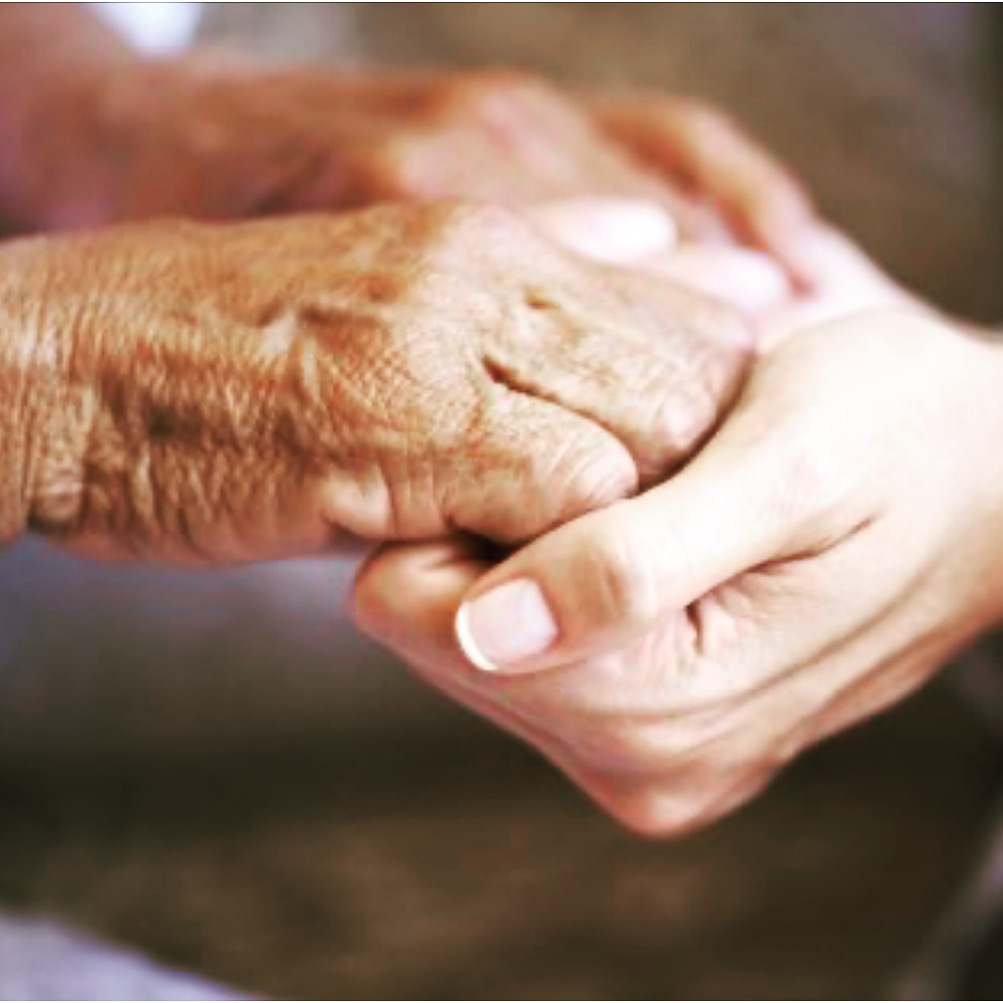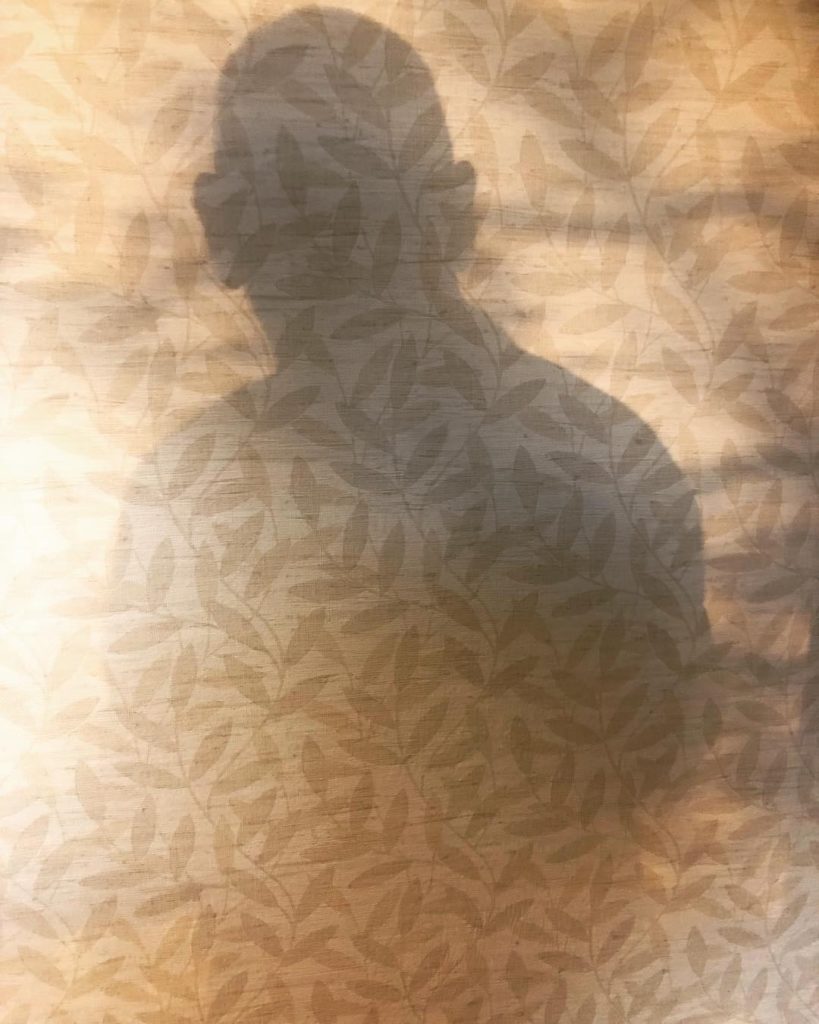
Y E S
GUILTY
I like to touch
. . .I’m a HAND-HOLDER
A HUGGER
A HAND-ON-YOUR-SHOULDER-Guy
A SHAKE-YOUR-HAND-WITH-BOTH-OF-MY-HANDS-Man. . .
except for NOW
THIS SEEMINGLY-NEVER-ENDING-N O W
it’s still all
HANDS-OFF-DO-NOT-TOUCH-DON’T-THINK-OF-HUGGING-TIME
and it’s tough
RE-adjusting to the
FIST-BUMP
ELBOW-BUMP
NAMASTE-BOWING
alternatives. . .
B U T
In the ongoing Pandemic,
Elbow Touches, Fist Bumps, and Namaste Bows
Are Not Only NOT Going Away
But Actually Might Keep Us Going. . .
Can we find ways to touch
outside our homes
during this re-vamped up pandemic?
At least One doctor says yes. . .
LEIF HASS, is a family medicine doctor and hospitalist at Sutter Health’s Alta Bates Summit Medical Center in Oakland, as well as a clinical instructor with UCSF and has some interesting things to say about our new
TOUCH-LESS NORMAL

In a desert of touch, just a square inch of clothed skin touching the elbow of a cashier, a colleague, a friend, a barista, triggers a sensation that can be felt head to toe! It is a simple fact: People need to touch people. This is one of the fundamental lessons of 2021 and we’ve tried desperately, in spite of the bad news, to do just that, T O U C H. . .
Why do we touch?
Why does touch feel so fundamental and how come the sensations associated with it are so profound? That’s the question that has us puzzled l as we eat taco bowls and sip coffee. . .
From a purely tactile standpoint, touch is superficial; evolutionarily and physiologically, it is deep. Touch was an important mode of communication in our primate ancestors, who had limited verbal communication. Even now, it’s perhaps the most important mode of communication in infants.
What does touch do? According to years of research, touch quiets the “fight or flight” part of the nervous system, and it turns up the calming “tend and befriend” response, which for infants encourages growth. The role of touch persists into adulthood. We have all felt the healing power of soothing touch from a parent, friend, or lover. Research suggests that touch can also signal cooperation. This has its roots in primate grooming, and it is evident now in the greeting handshakes of many cultures.
Touch (and other nonverbal communication) can also be seen as an amplifier of emotion. This makes sense when you think about getting or giving some Elbow Love. Today, we need our feelings of belonging and connection amplified in a big way. We are an inherently tribal species, and that means at an unconscious level we are always assessing who is in our clan and who isn’t.
Months of anxiety and conflicting nonverbal cues can leave us feeling unsettled even while we are surrounded by people we know well. You can get that alone-in-a-crowd feeling, even among friends! Elbow Love is literally reaching out again to reaffirm the important bonds between members of “our tribe.” When we are met with reciprocity, our commitment is confirmed—and the touch acts to amplify our affection and cooperation that have been waiting for months to be more fully expressed. Often, this provokes a head-to-toe flush of pleasurable bodily sensations, including a soaring, expansive heart. Positive thoughts are amplified, too: Place, purpose, and community feel profound when tied to such positive bodily sensations.
As cerebral, verbal creatures, we can have trouble grasping the extent to which our thoughts and actions are influenced by nonverbal stimuli. In milliseconds, we unconsciously process stimuli like touch, which can activate neural pathways that lead to a secondary physical sensation—the “feeling” part of feeling—and a cognitive tone that together make up an emotional response. Caught up in our thoughts, we can neglect to notice the bodily sensations and cognitive tones that arise during these challenging times. This is especially true for those of us in stressful caregiving settings.
When we pay attention to our body and our thoughts, we can better appreciate the good, like the experience of Elbow Love with a friend. At the same time, we can create positive mental scaffolding for difficult situations, such as another frustrating Zoom meeting or, for me, when a patient’s health deteriorates. Emotions have been called the wisdom of our ancestors. When we look for this wisdom by paying attention to our bodily sensations, we can amplify the good and temper the challenging.
Rebuilding community through touch
I take COVID-19 seriously. At work, I am always masked except when I am eating, which I try to do outside. I take the stairs instead of the elevator, and I look for isolated corners to work on my patients’ charts. Wearing masks and looking away, holding the breath, then leaning for just a moment to touch elbows is an extremely low-risk encounter—and the benefits are real: It can transform an interaction and the whole feel of a place. Our collective mental health has suffered during the ongoing seemingly gaining more steam pandemic, and for those of us who have remained vigilant these months, the time is right for this small amount of contact.
We have been through incredibly tough times. Our friends and colleagues were turned into potential infectious vectors overnight. The pandemic upended our communities. While we may have a stronger intellectual appreciation of community, at an emotional level I think we are all suffering in part because without the normal nonverbal inputs, our experience in community remains disrupted. But with just the slightest touch, we can make manifest the connection that community implies. Through the visceral way that touch amplifies emotions, a little physical connection can reaffirm our connection and powerfully bring back more of the good feeling we get from being around those we care about.
At the inpatient hospice unit I work, the first thing I try to do every morning even as the night shift is ending and the morning shift is beginning is to see as many staff members as I possibly can. I want to end someone’s day on a positive note and begin someone’s in a great way. We all greet one another all masked up and not in the same work areas. Even at about 10 feet apart, eyes meet over our masks. I can now distinguish a smile under a mask just by watching, really looking at their eyes. We approach each other, then look to the side, hold our breath, and gently touch elbows.
Often, stepping back, I feel like I am lifting off in a hot air balloon, a joyful warmth and expansiveness practically lifts me off the ground.
“Let’s keep spreading the Elbow Love, the gloved-fist bump with the hope that same feeling will flow to our patients!” Is unspoken sentiment that I believe is being communicated and more importantly, shared. . .
Even with effective vaccines and boosters, it doesn’t always feel like the light at the end of the tunnel; with a feeling we still have a long way to go. Thankfully, we are wiser from the challenges we have faced. We have a deeper understanding of the importance of relationships and community. With an understanding of the role of touch in human interactions, I hope we can safely use just a little Elbow Love, a loving namaste bow, a quick fist bump to reaffirm and amplify the sense of connection and community we need to make it through the coming months.

P R O V E
that’s it more
than your
S H A D O W
of doubt
and lot more like
A HEALING TOUCH
of Sincerity